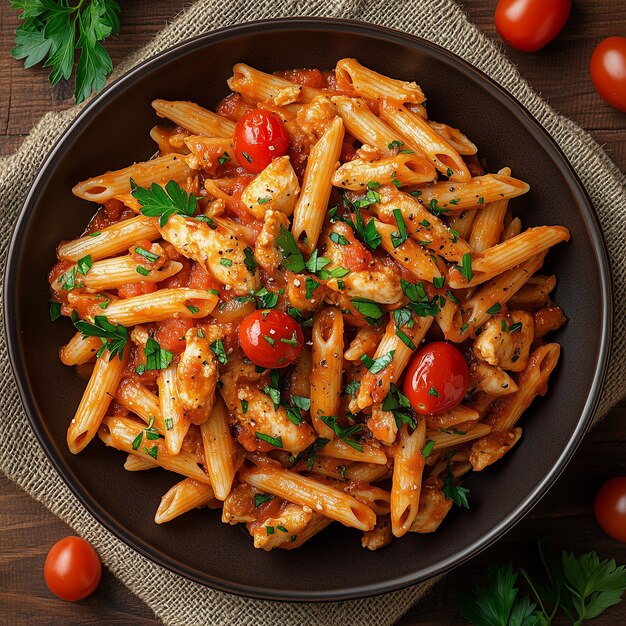
The History of Pasta: From Ancient Rome to Your Kitchen
Few foods are as beloved and versatile as pasta. From a simple plate of spaghetti aglio e olio to a rich, slow-simmered lasagna, pasta is the heart of countless meals around the world. But pasta is more than just a pantry staple - it’s a piece of culinary history that spans centuries, continents, and cultures.
In this blog, we’ll take a journey through the fascinating history of pasta, explore how it evolved into the shapes we know today, and show you how to bring authentic Italian pasta - from brands like Delverde, Mancini, and Barilla - into your kitchen.
1. The Origins of Pasta
Contrary to popular myth, pasta was not “brought to Italy by Marco Polo.” While Polo’s travels to China may have introduced new noodle techniques, historical records show that Italians were already eating a form of pasta as early as the 4th century BCE.
-
Ancient Rome: Romans ate “lagana,” sheets of dough made from wheat flour and water - an early version of lasagna.
-
Arab Influence: In the Middle Ages, Arab traders introduced durum wheat and techniques for drying pasta, allowing it to be stored and transported over long distances.
-
Sicily’s Role: The island of Sicily became one of the earliest pasta-making hubs, where dried pasta (itriyya) became popular by the 12th century.
2. The Evolution of Pasta Shapes
Pasta evolved from a simple sustenance food into a culinary art form. By the Renaissance, Italy had hundreds of regional pasta shapes, each created to complement local sauces and traditions.
-
Northern Italy: Egg-based fresh pasta like tagliatelle, tortellini, and pappardelle
-
Southern Italy: Dried durum wheat pasta like spaghetti, penne, and orecchiette
-
Regional Specialties: Trofie from Liguria, Malloreddus from Sardinia, Cavatelli from Molise
Each shape serves a purpose - some are designed to hold hearty sauces (rigatoni), while others are meant to be tossed lightly with pesto or olive oil.
3. Industrial Revolution & the Birth of Modern Pasta Brands
The 19th and 20th centuries saw pasta-making become more industrialized, making it accessible to families across Europe and eventually the world.
-
Barilla: Founded in 1877 in Parma, Barilla began as a small bread and pasta shop before becoming one of the world’s largest pasta producers.
-
Delverde: Known for its slow-drying process and use of pristine spring water from Italy’s Majella National Park, Delverde represents artisanal, high-quality production.
-
Mancini: A boutique pasta maker producing small-batch, farm-to-table pasta directly from their own durum wheat fields in Le Marche, Italy.
These brands helped make pasta a global phenomenon while keeping traditional techniques alive.
4. Pasta as a Symbol of Italian Identity
Today, pasta is more than food - it’s a cultural icon. Italians consume about 60 pounds of pasta per person per year, and each region fiercely protects its local shapes and recipes.
Pasta also symbolizes comfort and togetherness - it’s what Italians serve on Sundays, holidays, and family gatherings.
5. Bringing Authentic Pasta Into Your Kitchen
Thanks to imported brands like Delverde, Mancini, and Barilla, it’s easier than ever to recreate authentic Italian pasta dishes at home.
Tips for Cooking Pasta Like an Italian:
-
Use plenty of water: 4–6 quarts per pound of pasta
-
Salt the water generously: “As salty as the sea” is the Italian rule
-
Cook until al dente: Firm to the bite, not mushy
-
Reserve pasta water: The starchy water is perfect for finishing sauces
6. Pairing Shapes with Sauces
Choosing the right pasta shape can elevate a dish:
-
Spaghetti & Linguine: Great for tomato-based or oil-based sauces
-
Rigatoni & Penne: Perfect for hearty meat sauces or baked pasta dishes
-
Farfalle & Fusilli: Excellent for creamy sauces or pasta salads
-
Lasagna Sheets & Cannelloni: Ideal for oven-baked recipes
Conclusion
Pasta’s journey from ancient Rome to modern kitchens is a story of tradition, innovation, and cultural pride. Whether you choose Delverde for its artisanal quality, Mancini for its farm-to-table authenticity, or Barilla for its consistency and variety, you’re participating in a centuries-old culinary legacy.
Explore our curated collection of Italian pasta brands at Pick and Get and bring a true taste of Italy to your table.








